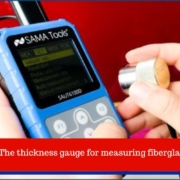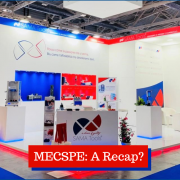Coating Thickness Measurement
For companies that make coatings and paint finishes a core part of their business, thickness measurement is a vital process to ensure that products comply with standards and meet design requirements.
Coating thickness measurement is a precise, non-destructive method of verifying the thickness of coatings applied to the surface of a part, increasing product life and reducing long-term costs. Furthermore, it guarantees a perfect balance between aesthetics and protection of the painted product.
In this article, find out how measuring the thickness of coatings can help your QC department identify coating issues, protect your products and achieve aesthetic perfection.
What is Coating Thickness Measurement?
As the name suggests, coating thickness measurement is a non-destructive testing method to measure the thickness of a coating applied on the surface of a piece.
Besides maintaining the integrity of the part, an interesting aspect of this non-destructive measuring method is that it can be applied to both dry and wet coatings. The main difference between dry and wet coating thickness measurement will be the type of instrument employed.
Why is coating thickness measurement essential in many industries?
Measuring the thickness of coatings is a very important verification process for companies that produce paints and coatings. This activity consists in the precise measurement of the thickness of a coating applied to the surface of a piece, without causing damage or alterations to the surface itself.
This method is non-destructive and can be performed on both dry and wet coatings, depending on the tool used.
Coating thickness measurement is essential to verify that coatings comply with standards and design requirements, reduce material costs, and ensure product life and protection.
It can be performed during the inspection of incoming goods or during production and is commonly used by quality control and maintenance departments to identify problems such as loss of coating, incorrect thickness or non-compliance with requirements.
Being able to timely identify any problems with the coating allows for a longer life of the coated part and a very significant reduction in long-term costs.
Furthermore, an appropriate layer of coating helps achieve the desired balance between aesthetics and protection of the painted part.
Coatings that are too thick can lead to aesthetically unwanted results, as well as the appearance of possible paint cracks that would ruin the piece.
How to measure coating thickness?
As described above, there are two ways of measuring coating thickness: dry coating thickness measurement and wet coating thickness measurement.
Dry measurement is usually used to measure any insulating layer applied on a metal substrate, such as paint and plastic layers. It is carried out by means of coating thickness gauges, such as our high accuracy digital coating thickness gauges able to accurately indicate the thickness of each type of coating or paint present on ferrous (magnetic) and non-ferrous (non-magnetic) metal supports.
Coating thickness gauges use the magnetic induction measuring principle for ferrous base coatings and the eddy current measuring principle for non-ferrous base coatings. In addition to paint thicknesses measurement, these instruments can measure different types of coatings applied to sub-layers or from galvanic baths such as anodizing, chrome plating, galvanizing, etc.
On the other hand, wet measurement is usually used as part of the painting or coating application process, since it does not require the coating and varnish layer to be completely dry. This is especially useful for coating service providers, as it allows them to immediately adjust the coating layer as necessary without the need of post processing.
Common examples of wet coating thickness measuring instruments are our comb-shaped thickness gauges and rolling wheel wet film thickness gauges.
What are the applications of coating thickness measurement?
As mentioned above, coating thickness measurement is essential for many industries.
Some of the sectors that commonly perform coating thickness measurement include, but are not limited to:
- Automotive.
- Aerospace.
- Marine sector.
- Commercial vessels.
- Mega yachts sector.
- Oil & Gas.
- Chemical.
- Construction.
- Electronics.

Common activities in these sectors that require coating thickness measurement are:
Piping inspections in the oil and gas, and chemical sectors to avoid corrosion issues that may result in pipe failure, costly shutdowns and industrial accidents.
Checking the paint coating consistency on an aircraft or component in the aerospace industry for improved safety and performance.
Nautical and maritime maintenance, like in the case of bulkheads, tanks, ship hulls, and other coated components.
Verifying the integrity of pressurized containers such as fire extinguishers, gas tanks, industrial boilers and others that depend on coatings for corrosion protection.
Maintenance inspections on bridges, especially those with metal structures, which are coated to withstand the harshest environmental conditions.
How to choose a coating thickness measuring instrument?
Selecting the right coating thickness measuring instrument for your specific application is very important, since making a wrong choice may result in a total inability to obtain any value or obtaining false information.
Any of the aspects mentioned above means undesired consequences such as increased costs, customer dissatisfaction and loss of reputation.
To avoid all these problems, some aspects must be considered in order to select the right coating thickness measurement for your application:
- The coating type, whether it is dry or wet.
- The type of coating and material coated.
- The roughness of the coating. This also affects the type of probe to be used.
- The area measured and its location.
- The geometry of the part being tested.
At this point, it is also important to highlight that there are destructive methods to measure coating thickness, as well.
For example, our paint inspection gauge (P.I.G.) – SAPIG548 provides high accuracy measurements in the range of 2-2800µm on every substrate, like steel, non-ferrous metals, plastics, wood, concrete, plaster, etc. with the aid of a built-in microscope, that allows you to measure the thickness of each layer. Thanks to its microscope, this instrument measures both the total thickness of the coating and each single layer deposited on the substrate.
You can also read our guide on ultrasonic thickness measurement.

Coating thickness gauges – SAWF, SAPIG548, SAWFR
Nevertheless, the integrity of the part is not maintained as this is a destructive test.
Conclusion
So far we have seen that thickness measurement has several crucial functions:
- Quality control: The measurement of the thickness of the coating allows one to verify that the thickness of the coating complies with the design requirements and the reference standards. This way, companies can ensure that they produce quality products that meet customer expectations.
- Corrosion Prevention: A proper coating layer helps prevent corrosion of metal products. Coating thickness measurement helps to identify any layer leakage that could cause corrosion.
- Long-term cost reduction: Coating thickness measurement allows you to identify any coating issues in a timely manner, which increases product life and reduces costs , long term.
- Balance between aesthetics and protection: A suitable coating layer allows you to achieve the desired balance between aesthetics and product protection. Coatings that are too thick can be aesthetically undesirable and cause paint cracks which damage the product.
Regardless of the application, we have different types of coating thickness gauges for all your needs.
If your interested in seeing the instruments that we offer for measuring the thickness of dry and wet paints and coatings, just click here.
Instead, if you are still unsure or have any doubts about this type of measurement, we advise you to contact us at 0584/392342 or 0584/392453 and one of our trained professionals will be happy to assist you.












